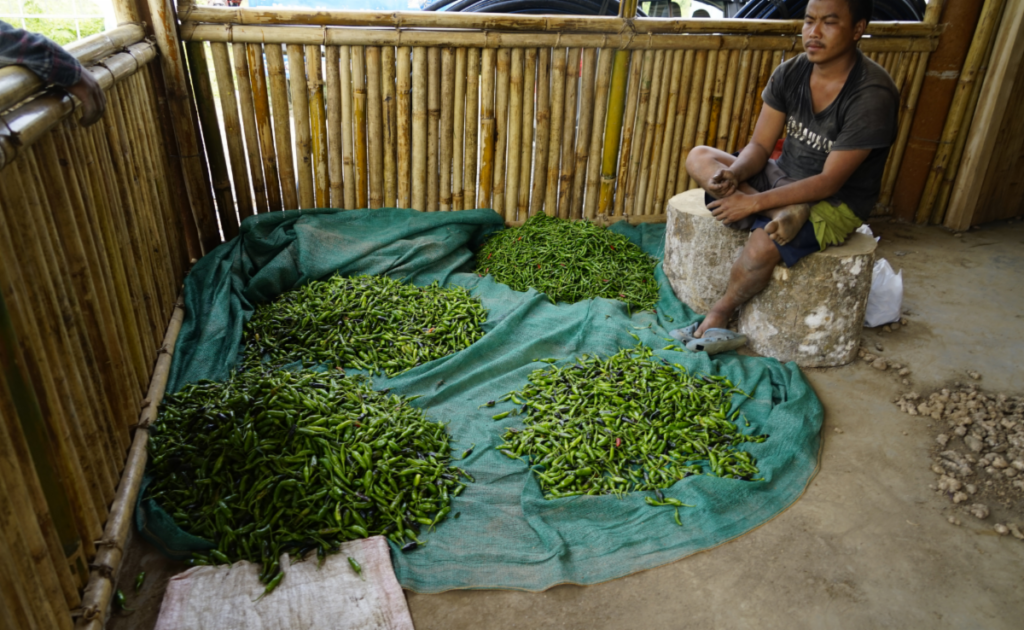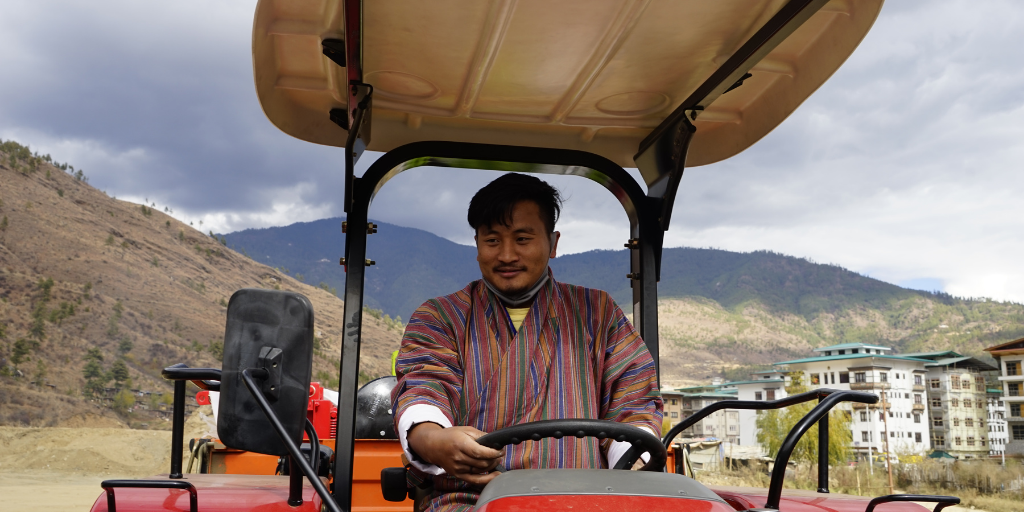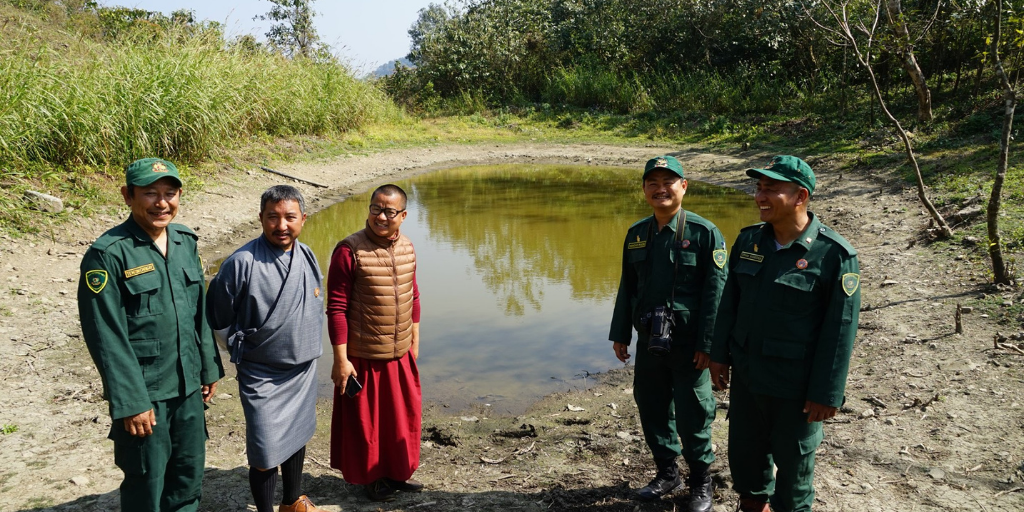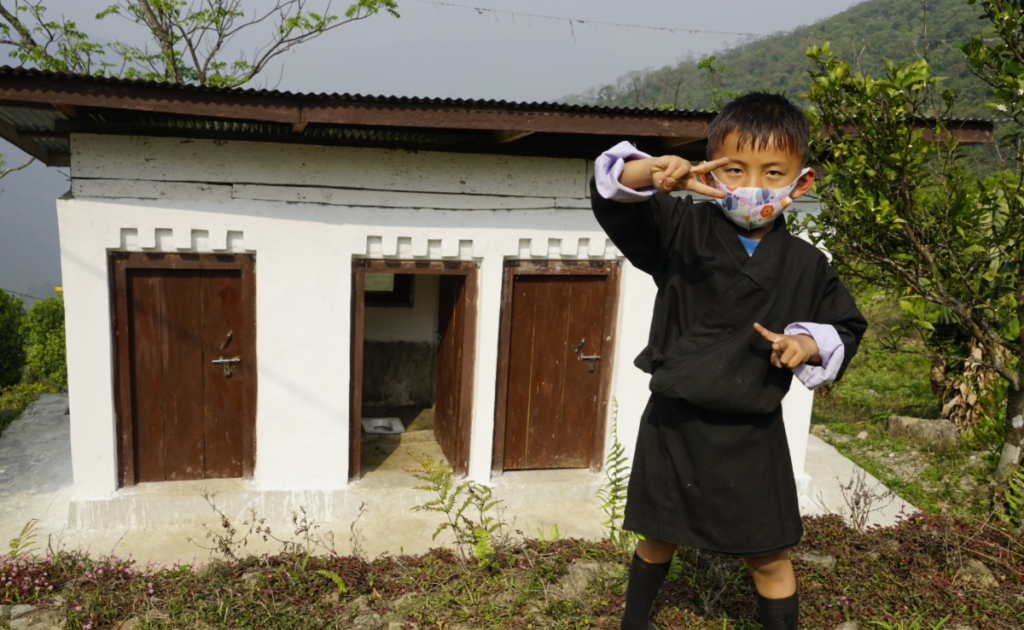March 31, 2021
Happy Spring! If you follow Bhutan closely, you may know that border closures and layoffs during this pandemic have significantly impacted food security and unemployment across Bhutan. This has been a growing concern for the Royal Government and for the Bhutan Foundation, which is why I took a trip to Panbang in Southern Bhutan to visit our project sites and get a feel for how communities are handling the pandemic on the ground. Specifically, I wanted to visit our partners who are working on programs related to organic agriculture and environmental conservation in the region. Today, I’d like to share with you my experiences from the field.
Visit to Khengrig Namsum Cooperative in Tingtibi Village
My first stop on the trip was to visit Khengrig Namsum Cooperative (KNC), a supply-chain cooperative located at Tingtibi village in Zhemgang Dzongkhag (district) that helps support 230 collaborative farmers from four villages: Trong, Nangkor, Nangla, and Phangkhar. KNC delivers the farm produce to market, which in turn supports commercial vegetable production and provides value-added services like post-harvest processing. The partners currently include 16 members, each with a minimum of a high-school diploma, and are headed by the chairperson, Mr. Thinley. I met with the group and discussed the challenges and need to address issues that have come up during the pandemic. Mr. Thinley shared that throughout the pandemic, farmers faced transportation issues like not being able to bring the produce to the market, which resulted in large amounts of vegetables going bad before reaching the point of sale. Additionally, the farmers lack adequate post-harvest crop and pest management. Demand remains high for the produce, but they have to wait for the supply order, which affects the shelf life of vegetables. We had discussions on how to solve this issue of shelf life and transportation, such as cold storage, and discussed how the Bhutan Foundation can support them. Despite these issues, however, the team is positive, and the project continues to move forward to increase production and distribution of vegetables in the region. KNC is one of the Bhutan Foundation’s Small Grants Program recipients for the project. This project aims to produce 24 tons of vegetables and eight tons each of tomatoes, chili, and onion. In the five acres of land developed under this project, the KNC has distributed seedlings of around 3,800 chilis, 3,080 onions, and more than 4,000 tomatoes to 82 households.
Marangdut Organic Group

After my time with the KNC, I traveled to Marangdut to visit a subsistence farming community with 22 households and a population of about 105 people. This small, rural community in Panbang is where the Bhutan Foundation, in collaboration with the Samdrup Jongkhar Initiative under the Lhomon Society, expanded an organic farming program. Our partnership with the Marangdut organic farm focuses on three core components: food, water, and energy self-sufficiency. The community has been trained on the System of Rice Intensification method of paddy cultivation, and water resources have been set up for drinking and irrigation. In terms of energy, cow sheds have been set up to collect waste to make organic biogas, and the team has successfully piloted a biogas system in one of the community households. During my visit, the Marangdut community set up two greenhouses with proper drip pipes along with the bedding and planted chili, cabbage, and broccoli. The group estimates farm produce of more than 200 kg (~441 lb) of chilis, around 40 kg (88 lb) of cabbage, and 30 kg (66 lb) of broccoli from the greenhouse. The community has generated income for community members from selling the produce as well as leasing out the power tiller, which was provided by the Bhutan Foundation in 2019.
Panbang Youth Cooperative

Nearby, at the Panbang Youth Cooperative (PYC), I was able to visit an exciting new project that has taken root in the past few months. The Bhutan Foundation has supported PYC with a new farming tractor and other farming equipment to encourage the youth to engage actively in this endeavor and meet the urgent need for food production during the pandemic. With the help of our generous donors in purchasing the tractor, the PYC developed 14 acres of farming land and planted an astounding amount of vegetables. So far, the numbers include around 5 acres of chili, 2 acres of ginger, 0.5 acres of radish, 1.5 acres of watermelon, 1 acre of turmeric, 1 acre of tapioca, 0.3 acres of beans, 0.5 acres of eggplant, and 1 acre of pumpkins. In just the past few months, the tractor has helped speed up land development and saved resources for hiring, transportation, and door-to-door delivery of farm produce. The tractor is also bringing revenue to the cooperative by leasing it out to others in the community.
It’s estimated that PYC has harvested and sold the following to date: 100 kg (220 lb) of beans, 2,400 kg (5,291 lb) of cabbage, 40 kg (88 lb) of tomatoes, and 347 kg (765 lb) of chilis. The consumers of the products are the local community in Panbang, schools, and monasteries, which total more than 300 households.
In addition to the farm, the youth group provided additional support for communities in western Bhutan during the pandemic by delivering food and produce. The group provided in-kind support to the government as their contribution during this difficult time.
Conservation through Compassion at Dongag Tenpailing Monastery under Norbugang Village

While other projects are doing great work on the ground in terms of agriculture, the Dongag Tenpailing Monastery in Norbugang village continues to play a vital role in garnering community participation in tiger conservation. In 2019, the project “Strengthening the tiger conservation program through education and livelihood intervention” was supported by the Foundation and implemented by our partner, the Bhutan Tiger Center.
The project we called “Conservation through Compassion” organized activities for poachers led by the monks at the monastery, such as religious pilgrimage tours, religious discourse, teachings to benefit all sentient beings, and much more. At that time, in an effort to support tiger conservation, under the guidance of the Khenpo (head monk of the monastery), 38 ex-poachers came forward to give up poaching, and now these ex-poachers support community benefit programs, such as labor contribution to tiger habitat restoration and revival of a water recharge pond that benefits 20 households in the community. Some of the converted poachers participate in meditation in the retreat centers, under the Khenpo’s guidance, along with several other monks. There are plans to expand the program once the pandemic is over to revive another recharge pond in Gansahri village, which hopes to benefit 75 households as well as nearby schools and monasteries.
Sanitation Program at Norbugang Primary School

Before heading to Tanzama village in Nganglam, I briefly visited Norbugang Primary School, where the Foundation supported the school toilets’ construction last year as part of the sanitation program. The school has 117 students. Prior to the new toilets, the students were using an open field since the old toilets were completely unusable. Following a request from the local teachers, families, and community members, the Bhutan Foundation supported the building of proper toilets and sanitation facilities at the school.
Last Stop: Tanzima, the Elephant-Friendly Village
From one conservation community caring for tiger–human conflict, I made a final visit to Tanzima, an elephant community making similar moves to engage “Conservation with Compassion”! Due to previous conflicts with local elephants, the village established electric fencing to help curb community encroachment—but it didn’t stop there. Recognizing the elephants’ needs, the Tanzima community shared that they planted napier grass, established a water source, and placed salt licks outside the fencing. These efforts have been able to create more sustained harmony with the elephants. They neither come inside the village nor show a threat to the community. The community was eager to share their thanks to the Bhutan Tiger Center for providing the village with the high-voltage electric fencing, and the Bhutan Foundation for supporting the community center, which is currently being used by the COVID-19 task force and health workers. They also shared that, with our support, the community is also returning the conservation efforts by contributing 1,000 kg (2,204 lb) of salt for the elephants twice a week. The community leaders also explained that there is a growing need to revive elephant habitat for all the wild animals outside the fencing.
While there, we also visited a small, unique area of farmland where a group of 10 elderly people are actively working on organic farming. The group harvested 100 kg (220 lb) of beans and sold them to the community of Nganglam. The Bhutan Foundation supported purchase of the seeds last year as part of our COVID response to the community.

I am glad to have had the opportunity once again to meet with our communities in their own backyards to see their progress and their challenges in person. However, while many are thriving and making headway, the pandemic still hangs heavy over much of the region. As I write to you today, I am still in a two-week quarantine following my trip down south—a procedure that hopefully might ease as soon as the vaccine roll-out makes its way across Bhutan this week. So far, in five days, more than 79 percent of the eligible population has already had its first dose! Here’s a link to our website that is constantly updated on the country-wide vaccination efforts and everything related to the pandemic.
Thank you to all of you who have supported these efforts on the ground, and I hope to see you all in Bhutan soon so you can see the incredible impact your support is making here!
Sincerely,
Dorji Gyeltshen
Program Officer